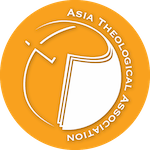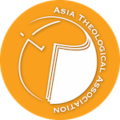ATA Theological Consultation 2024
Sights, Sounds, and Stories
Sights, Sounds, and Stories
Dates: November 12-15, 2024
Venue: Furama Hotel, Chiang Mai
Plenary Sessions

I am interested in the arts and theology because I want to see our Creator Redeemer being manifested in and through how we train the future leaders of the Church.
OPENING REMARKS AND PLENARY SPEAKER, “THEOLOGY AND THE ARTS: THE WAY FORWARD, GLOBAL PERSPECTIVES”
Dr Michael A. Ortiz
ICETE (International Council for Theological Education)
DTS (Dallas Theological Seminary)
Dr. Michael A. Ortiz serves as Vice President for Global Ministries and Associate Professor of Missiology and Intercultural Ministries at Dallas Theological Seminary. He oversees the Seminary’s language programs (Chinese and Spanish), free online programs, international
student development and discipleship, research on global pastoral training, and the worldwide training of pastoral leaders through DTS.He also currently serves as Executive Director for the International Council for Evangelical Theological Education. He’s been married to Kathy for over thirty-five years, and they have two adult children and two grandchildren.
Plenary 1

Sawai Chinnawong

Thanit Lokeskrawee

Dong Arnan Moontrakorn
Layers of Contextual Art
“Layers of Contextual Art” is an innovative session designed to explore the multifaceted nature of contextual art through the works of three distinguished artists. This session aims to engage participants in a deep and meaningful exploration of how art can transcend traditional boundaries by adapting form, concept, and symbolic value to resonate with diverse audiences.
Level One: Contextual Art in Form (represented by Sawai’s art pieces).
Sawai’s artwork exemplifies the foundational level of contextual art, where the primary focus is on adapting the form of Thai Art to reflect cultural, historical, and social contexts.
Level Two: Contextual Art in Concept (represented by Thanit’s art pieces).
Thanit’s work focuses on the conceptual underpinnings of art in Thai context.
Level Three: Contextual Art in Symbolic Value (represented by Arnan’s art pieces).
Arnan’s pieces represent an important facet of contextual art, where symbolic value is paramount. His works are rich with symbolic elements that resonate deeply with specific cultural, religious, or social contexts.
This session will help participants understand and appreciate different facets of contextualization. It might become an inspiration to apply this method to contextual theology as well.
Mr. Chinnawong committed his life to Christ while in his twenties. Today he is a member of the United Church of Christ of Thailand. His love for art began when he was a child in middle part of Thailand when he saw some old man painting on Buddhist temple wall. He would watch them for hours each day. He interest in art persisted into adulthood, and he studied art in vocational school in Bangkok, Thailand. It was at this time that he become a Christian. After completing his art studies, he attended the McGilvary Faculty in Chiang Mai. He was deeply influenced by a series of leatures on the history of Christian Art there in 1984 by artist Nalini Jayasuriya from Sri Lanka, He began creating liturgical art while attending seminary.
My name is Thanit Lokeskrawee, the principal of Chiang Mai Theological Seminary, Thailand. Three words define my life: Art, Church, and God’s Word. I was a Thai Buddhist saved by grace though Christ when I studied Fine Arts at Chiang Mai University. God called me to serve him as a pastor in a local church. God has changed my life and continue to make me to be more like Christ, by His Word.
My name is Arnan Moontrakorn, iServe Thailand Coordinator. Three definitions of my life are: art, inspiration and the gospel. I started studying art at the age of 15 and have continued to create art until now. I was born into a Buddhist family. In 1992, I received Jesus Christ as my Savior when I was a freshmen of Faculty of Fine Arts Chiangmai University.
By God’s grace in the year 1997, I began to serve God until now. In particular my work is try to invent the new methods in ways that are appropriate for Thai culture in order to bring the good news to Thai people by the inspiration that God has given me as His servant.
Plenary 2

I was raised in an atmosphere of much music-making and conversation of theology, politics, science, and music at the lunch table after Sunday services.
Homeward Bound: Returning Ancient Hymn-Texts and Sacred Choral Music to Congregational Worship
Dr Joel Navarro
Much of the church music canon has found little space in current Christian worship. Motivating our church congregations to consider immanentizing the eschatological vision in Revelations 7:9 means to bring together music of all nations, all times, and all places. The presentation aims to discover ways by which some congregations have successfully brought together through special liturgies music by church composers from many nations of the last 500-600 years.
Dr. Joel Navarro is an Affiliate Professorial Lecturer of Singapore Bible College and St. Paul University Manila. Previously, he taught at Calvin University, the University of the Philippines, and the Asian Institute for Liturgy and Music. He has held directorships of nearly 25 choruses. He obtained his doctorate in conducting at Michigan State University, and is a published author, composer, arranger, singer. He is music director of the Hymn and Oratorio Society of the Philippines.
Plenary 3

Dr. Eudenice Palaruan
I am a choral pedagogue specializing in global liturgical vocal music, and I look forward to Revelations 7:9.

Mr. Joshua Chang
Music is an art of time, which is best paired with the Divine Word.
Beyond Music, Transcending Borders: Rethinking Education for Asian Pastor-Musicians.
Singapore Bible College, School of Church Music
For decades, seminary music education in Asia has been modeled after Western music traditions(conservatoire-style), often deeming Asian music as inferior, leaving little room for theological, cultural, and musical integration. Is there a need to rethink and redevelop our worship and church music education? How can we better prepare adaptable pastor-musicians to be theologically sound, historically informed(both in Asian and Western music history), technically competent, and culturally sensitive to the communities they serve?
Eudenice Palaruan studied conducting at the Berlin Church Music School in Germany. He is actively involved in the choralization of Asian traditional songs with the former Asian Institute for Liturgy and Music (AILM). Eudy and his wife, Anne, were volunteer artists of the Campus Crusade for Christ in Germany and partnered with a mission-based organization, WindSong. Eudy is an associate professor at the Singapore Bible College and the choral director of the Singapore Symphony Chorus.
Joshua Chang’s singing journey started in his primary school years as a young chorister. After receiving his Bachelor’s (2009) and Master of Church Music (Piano, 2014), he was recommended to further studies in singing and was blessed to graduate with a Master of Music (Voice) at Northwestern University (Chicago). He is finishing his Doctorate in Music and Arts (Voice) studies at Claremont Graduate University. He is the current dean of SCM.
Plenary 4

Storytelling is among the oldest of art forms, and that is what largely what the Bible uses to mediate theology.
Elements of Biblical Storytelling
Dr Havilah Dharamraj
Preaching biblical narrative requires a close reading of the text with an eye on the characterisation, plot and setting so as to follow the point the narrator is making, and arrive at a single takeaway. In the course of telling the story, we add in details of the historical context as necessary to make sense of the text. To check the validity of the takeaway, we check in immediate literary context, that is, the text preceding and following.
Havilah Dharamraj is faculty in Old Testament at the South Asia Institute of Advanced Christian Studies (SAIACS) in Bangalore, India. Her academic degrees include MS in biochemistry, MA in Christianity, and PhD in Old Testament from the University of Durham, UK. Her areas of academic interest are Old Testament narrative, reception-centred intertextuality that engages texts across the biblical canon, and comparative literature which converses biblical texts with the sacred texts of other faiths. She encourages the retrieval of traditional methods of storytelling for use in preaching.
Plenary 5

Art continues to speak of and to God where even our most brilliant speech fails.
Magnificat from the Margins: Utilizing Art in Research Among The Poor
Dr Marie Joy Pring Faraz
Research is storytelling: the more vivid the stories of experiences and cultures, the more meaningful and significant the research. What takes such stories from one research participant’s consciousness into the focus group discussion table is not erudite words, but truthful artistic expressions. In this plenary presentation, Pring-Faraz will discuss not only the democratizing power of art for marginalized groups in research, but its unparalleled usefulness in exploring and identifying themes of people’s lived theology.
Dr. Marie Joy Pring Faraz serves as the Program Director of the PhD in Transformational Development at AGST-APNTS. A Langham Scholar, she also works as an adjunct faculty at several institutions such as William Carey International University, Biblical Graduate School of Theology Singapore, Asian Theological Seminary, International Graduate School of Leadership, and Biblical Seminary of the Philippines. Joy was a resident research scholar at Calvin University, and her work as a research consultant for International Justice Mission Philippines and ECPAT International New York gives her the opportunity to advocate for women and at-risk children.
Plenary 6

I’m interested in arts and theology because both are powerful forms of expression that help us connect with deeper truths about life, faith, and the human experience. Art has the ability to communicate what words often cannot—emotions, beauty, and even divine mysteries—while theology seeks to understand and explain our relationship with God. By combining the two, I believe we can explore and express spiritual truths in ways that resonate with people on a more profound level. It’s about using creativity to bring the abstract into focus and making theology accessible and engaging through visual storytelling.
Pixels and Parables: The Intersection of Digital Art and Theology Today
Rev. Erwin Cabalang
Pixels and Parables: The Intersection of Digital Art and Theology Today” explores how digital art serves as a modern tool for expressing and communicating theological truths. By blending creativity with faith, digital artists and theologians can collaborate to create visual stories that reflect the beauty of God and engage today’s culture. This plenary highlights the practical ways in which digital media can be used to convey spiritual messages, enhance worship, and make theology more accessible. Join us as we explore the power of pixels as modern-day parables, telling timeless truths in fresh, impactful ways.
Rev. Erwin Cabalang is a creative professional where he studied Fine Arts in California, specializing in Traditional and CGI Animation and has worked with several animation studios. He serves as Director, Cinematographer, and Storyboard Artist at Arkimagine Studios, and is the Director of Media for the Asia Pacific Baptist Federation. A published author, Rev. Cabalang blends his artistic talents with his ministry, inspiring others through Right From The Heart Philippines, a Biblically-based program aired on major radio stations in the Philippines and social media.
Plenary 7

Arabic Calligraphy and Arab Christianity
Dr. Wageeh Mikhail
While it is true that Arabic calligraphy has become deeply intertwined with Islamic culture and tradition over the centuries, the art form itself is not inherently or exclusively tied to the Muslim faith. In reality, Arab Christian communities embraced and celebrated this elegant visual art as an integral part of their cultural heritage.
Wageeh joined Scholar Leaders in 2019 to guide the ministry in religions. Before joining Scholar Leaders, he was Director of the Center for Middle Eastern Christianity at the Evangelical Theological Seminary in Cairo, Egypt. He has published and spoken widely on medieval Arab Christianity.

